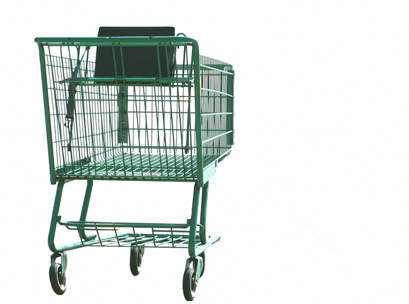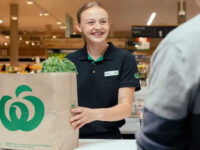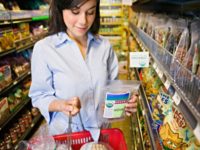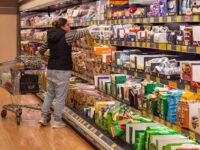 Supermarkets are scrambling to effect change across stores in order to meet the needs of a changing consumer and stay ahead of their competition. If the UK, US and European market is anything to go by, our Australian supermarkets of the future will offer less choice and engagement, but more private labels, greater convenience and solutions.
Supermarkets are scrambling to effect change across stores in order to meet the needs of a changing consumer and stay ahead of their competition. If the UK, US and European market is anything to go by, our Australian supermarkets of the future will offer less choice and engagement, but more private labels, greater convenience and solutions.
We want less choice
When it comes to choice in the supermarket, some is certainly better than none, but more is not necessarily better than less. For many years, Australian supermarkets promoted their vast ranges of brands and products, believing that broader, deeper ranges would satisfy shoppers. However, recent research suggests that, psychologically, this assumption was wrong. In fact, shoppers faced with excessive choice found it difficult to choose and were less likely to purchase.
Enter Aldi; who has continued to grow and attain Australian consumer acceptance since 2001. Selling only 1700 products, their continued expansion across the Eastern seaboard and now into South Australia, demonstrates the power of ‘less’. Simply, less choice, saves shoppers time, creates less confusion and satisfies most. Globally, where German discounters like Aldi or Lidl have entered the market, incumbent supermarkets have slashed range. Recently, Tesco cut 20,000 product lines from their 90,000 range, similarly Coles in 2012 reduced their range by some 7,000 products. While this strategy responds to customers who are looking to make their grocery shopping more efficient, it also reduces supply chain costs for supermarkets. Our supermarkets of the future will provide less range, but satisfactory choice.
We love Private Label
Aldi has legitimised private label products and forced other players to lift their game. This left Coles and Woolworths scrambling to improve the quality and packaging of their existing home brand range. Where once private label grocery products were considered a ‘cheap and nasty’ alternative for the branded product, supermarket quality assurance teams have changed this mind set. Today’s supermarket branded products, offer quality on par with national branded alternatives, with some, so closely resembling the market leader, one would be forgiven for grabbing the wrong box. Already some have raised concerns about how supermarkets are able to improve the quality of their private label ranges, while keeping their prices below the national branded alternative. Recently, former Kellogg’s CEO Jean-Yves Heude suggested that supermarkets having access to sensitive financial information, like component costs or ‘secret recipes’, may place them in a stronger bargaining position with their private label manufacturers.
Even with questions now being raised, Australian consumers appear to be warming to the supermarkets’ private-label products, with IBISWorld predicting their share of grocery sales will grow from 30% to 35% by 2020. In comparable markets, like the UK, the proportion of private label sales is almost at parity with national branded products and across Europe, countries like Switzerland and Spain have already reached more than 50%. The strategy of increasing the proportion of private label will meet the needs of shoppers who seek value over brand, but also provides sufficient margin to allow supermarkets to slash prices further. Our supermarkets of the future will have more and better quality private label products and lower prices.
We want to be entertained
Supermarket management are aware of the low involvement, habitual, routine nature of food shopping, therefore future supermarket designs will create excitement and theatre. Our supermarkets will become more open. Shoppers are already seeing initial changes with bunks of fruit and vegetables, on ice, almost outside the boundary of the store, ‘high street style’. Butcheries will become open to shoppers, allowing shoppers to observe production processes and talk to butchers about cuts of meat and cooking suggestions. Bakeries too will open up. Fresh fish on ice will be offered, taken from behind the glass barriers and presented, just as you might find at a local fish market. Supermarkets, will complement their narrow ranges with a small variety of locally produced products and be conscious of local ethnic demographics.
The capital involved to effect such changes will be offset with savings actualised elsewhere, in service, supply chain and operational costs; and this will present as a major problem for management. How do you engage and entertain your shoppers while keeping prices low? To cut costs, the growth of self-service checkout (now referred to by some as ‘assisted checkouts’) will continue to dominate the front of stores. Range reductions and increased private brands will reduce supply chain costs and improve margin. Operationally, ‘fresh products’ will be produced centrally. Yet, an unintended consequence of ‘pre-packaged meat’ in supermarkets, may deliver benefits back to local butchers. While some shoppers will be happy with the ‘Aldi-experience’ of pre-packaged meat, fresh produce and deli, clearly many others will be seeking quality cuts, information and engagement with butchers. Our supermarkets of the future will entertaining, but not engaging.
We want solutions
Time poor consumers will look to supermarkets for solutions. Quick and easy ‘Ready-made’ meal options will feature strongly in modern supermarkets, as will fresh-made sushi and noodles. The move will capture health conscious shoppers who seek more than burgers and fries. Similarly, online grocery shopping will increase and supermarkets will invest in supply chain nodes, such as ‘dark stores’ to facilitate this growth. The nature of supermarket shopping will change, with dry groceries being automatically delivered each week to homes via online, shoppers will venture into stores for just ‘fresh’.
NFC (near frequencies communications), beacon technology and big data will allow supermarkets to know where we are and what we want. This will lead to greater targeted offers that offer real solutions for shoppers, based on previous purchasing behaviour. Finally, just as supermarkets are now offering financial and insurance solutions, health and pharmacy will be a continued focus. Our supermarkets of the future will offer solutions for time poor, health conscious consumers.
Article by Dr Gary Mortimer, QUT Business School.
















